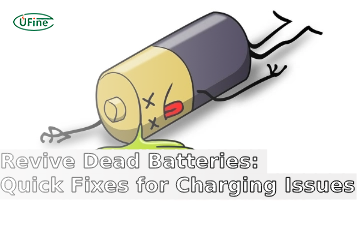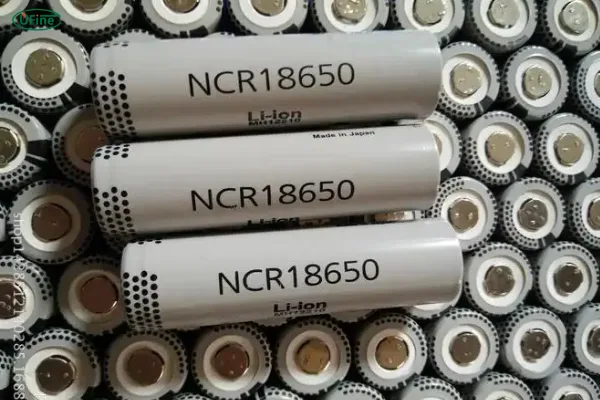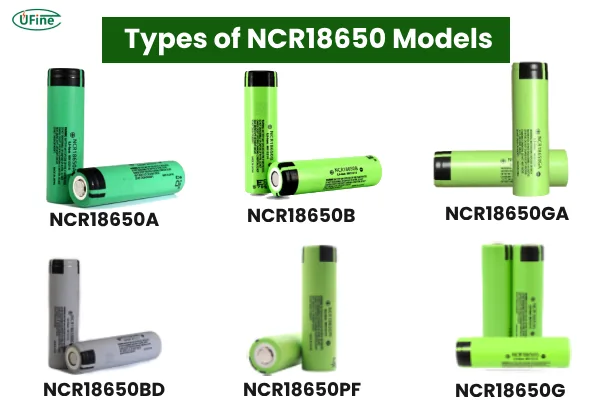
- Part 1. Introduction to NCR18650 batteries
- Part 2. Chemistry comparison: NCR vs. ICR, IMR, and INR
- Part 3. Panasonic and the evolution of NCR18650 cells
- Part 4. Detailed comparison of NCR18650 models
- Part 5. Protected vs. unprotected NCR18650 cells
- Part 6. Button top vs. flat top: terminal configurations
- Part 7. Real-World applications of NCR18650 batteries
- Part 8. How to verify authenticity and quality
- Part 9. Charging protocols and thermal management
- Part 10. Cycle life and aging behavior
- Part 11. Selecting the right NCR18650 battery
- Part 12. Outlook for NCR18650 batteries
- Part 13. Conclusion
In this comprehensive guide, we’ll explore what NCR18650 batteries are, the differences between models, and how to choose the right type for your needs.
Part 1. Introduction to NCR18650 batteries
The term NCR18650 refers to a family of lithium-ion cells categorized by:
- Form factor: 18 mm in diameter and 65 mm in length
- Chemistry: Typically lithium nickel cobalt aluminum oxide (LiNiCoAlO2, or NCA)
- NCR Prefix: Used predominantly by Panasonic/Sanyo, denoting a high-capacity and thermally stable design
The success of NCR18650 batteries lies in their careful balance of energy density, safety, and discharge capability. Their design aims to deliver sustained, high-capacity power with minimal degradation, making them a go-to option for energy-intensive but compact applications.
Part 2. Chemistry comparison: NCR vs. ICR, IMR, and INR
Understanding lithium-ion battery classifications is essential for distinguishing NCR18650 cells from other 18650 batteries. These differences stem from variations in cathode chemistry, which directly affect battery behavior:
| Chemistry | Abbr. | Characteristics | Use Cases |
|---|---|---|---|
| Lithium Cobalt Oxide | ICR | High capacity, low thermal stability | Cameras, phones |
| Lithium Manganese Oxide | IMR | High discharge rate, lower energy density | Power tools |
| Lithium Nickel Manganese Cobalt | INR | Balanced performance, stable | EVs, tools, medical devices |
| Lithium Nickel Cobalt Aluminum | NCR | High energy density, good cycle life | Laptops, EVs, flashlights |
NCR batteries are distinguished by their high gravimetric energy density and long cycle life, although their continuous discharge current is typically lower than IMR or INR chemistries. They’re not ideal for ultra-high-drain devices without thermal management.
Part 3. Panasonic and the evolution of NCR18650 cells
Panasonic (which absorbed Sanyo’s battery division) pioneered the NCR18650 series. The original intention was to produce a cell that could power compact electronics for extended periods without compromising safety. Panasonic refined the formulation to:
- Include aluminum doping, improving structural stability
- Utilize polyolefin separators to prevent internal short-circuits
- Integrate Current Interrupt Devices (CID) and PTC fuses
Over time, new variants were introduced to meet evolving needs—from higher discharge rates to enhanced thermal tolerance. Panasonic NCR18650 cells have been extensively used in the first-generation Tesla Model S, various Lenovo and HP laptop battery packs, and many flashlights and medical devices.
Part 4. Detailed comparison of NCR18650 models
NCR18650A
- Nominal Capacity: 3100 mAh
- Max Continuous Discharge: ~6.2A
- Energy Density: ~229 Wh/kg
- Internal Resistance: ~60 mΩ
- Key Traits: Stable, moderate discharge. No longer widely produced but was the first to break 3,000 mAh.
NCR18650B
- Nominal Capacity: 3400 mAh
- Max Continuous Discharge: 4.9A
- Energy Density: ~243 Wh/kg
- Advantages: Very high capacity
- Limitations: Not suited for high-drain loads
- Variants:
- Protected NCR18650B: Includes PCB for overcharge, over-discharge, short-circuit protection
- Button Top NCR18650B: Modified for compatibility with consumer electronics
NCR18650B Battery Explained: Uses, Specs, Lifespan
NCR18650GA
- Nominal Capacity: 3450 mAh
- Max Continuous Discharge: 10A
- Chemistry: NCA blended with NCM (Nickel Cobalt Manganese)
- Highlight: One of the best all-around NCR cells for high-drain applications
- Usage: E-bikes, high-lumen flashlights, cordless tools
NCR18650BD
- Nominal Capacity: 3180 mAh
- Max Continuous Discharge: 10A
- Target: Power tools, battery packs requiring balance of output and longevity
- Performance: Lower IR (~35 mΩ) enables better voltage regulation under load
NCR18650PF
- Nominal Capacity: 2900 mAh
- Max Discharge: 10A (continuous), 20A (pulse)
- Chemistry: More manganese-rich blend for improved safety
- Ideal for: UPS, energy storage systems, medical devices
NCR18650G
- Nominal Capacity: ~3600 mAh
- Max Discharge: ~5A
- Positioning: High-capacity, low-drain scenarios
- Emerging model: Still rare in general consumer availability but offers next-gen density
Part 5. Protected vs. unprotected NCR18650 cells
Protected Cells
- Include PCM/PCB: Safeguards against overvoltage, undervoltage, short circuit, and temperature extremes
- Length: Usually 2–3mm longer than unprotected versions
- Ideal For: Flashlights, single-cell devices, hobbyist projects
Unprotected Cells
- No built-in protection
- Require Battery Management System (BMS) when configured in series or parallel
- Common in OEM applications, like EVs or commercial battery packs
Failure to use proper protection can lead to thermal runaway. Thus, protected cells are recommended for inexperienced users or standalone applications.
Part 6. Button top vs. flat top: terminal configurations
NCR18650 cells come in two positive terminal formats:
| Type | Description | Common Use |
| Flat Top | Flush with cell casing | Battery packs, custom designs |
| Button Top | Protrudes 1-2 mm | Flashlights, consumer devices |
Note: Button top batteries often include protection circuits. However, their longer length may not fit tightly enclosed packs or chargers designed for flat-top cells.
Part 7. Real-World applications of NCR18650 batteries
NCR18650 batteries are used extensively in:
- Electric Vehicles (EVs): Tesla’s early battery modules used thousands of NCR18650B cells
- Laptops: OEM battery packs rely on B, BD, and PF variants
- Flashlights: Button top NCR18650B and GA are favorites for high-lumen models
- E-bikes/Scooters: GA and PF support high-discharge performance
- Solar Energy Storage: PF and BD offer long cycle life and thermal tolerance
- Power Tools: GA and BD deliver the necessary amperage with decent longevity
Part 8. How to verify authenticity and quality
Counterfeit 18650 batteries are widespread. For NCR18650 cells, look for:
- Etched Manufacturer Codes: Laser-engraved alphanumeric strings (e.g., N36A)**
- Weight: Authentic cells weigh 45–48 grams. Fakes are often lighter (<43g)
- Packaging: Panasonic doesn’t sell directly to consumers—authentic cells come via authorized distributors
- Test Equipment: Use IR meters, capacity analyzers (e.g., Liitokala Lii-500), or spot testers to validate specs
Pro tip: Avoid rewrapped brands that cannot verify cell origin, such as ultrafire or no-name labels claiming 5000+ mAh.
Part 9. Charging protocols and thermal management
Proper charging ensures longevity and safe operation:
- Voltage Limits: Charge to 4.2V, discharge to 2.5V (absolute minimum)
- Charging Current: Recommended at 0.5C to 1C (e.g., 1.5–3.4A for 3400 mAh)
- Temperature Ranges:
- Charging: 0–45°C
- Discharging: -20–60°C
Avoid charging near flammable materials and always use a charger with:
- Individual cell monitoring
- Overvoltage protection
- Thermal sensors
Part 10. Cycle life and aging behavior
The cycle life of NCR18650 cells depends on chemistry and usage profile:
- NCR18650B: ~300 full cycles (to 80% capacity)
- NCR18650GA: ~500 cycles (with moderate drain)
- NCR18650PF: ~1000 cycles under 1C use
Factors accelerating aging:
- Deep discharge (<2.5V)
- Overcharging (>4.2V)
- High-current bursts without adequate cooling
Best practices:
- Store at 40–60% charge for long-term shelving
- Avoid keeping at full charge for long periods
- Use thermal pads or airflow in high-current packs
Part 11. Selecting the right NCR18650 battery
Consider the following criteria:
| Need | Ideal Model |
| High Capacity, Low Current | NCR18650B or G |
| High Drain, Moderate Capacity | NCR18650GA or BD |
| Cycle Life & Durability | NCR18650PF |
| Compact Devices | Button Top B or GA |
| Custom Packs | Flat Top Unprotected Cells |
Also weigh:
- Availability
- Supplier credibility
- Pack design constraints (length, terminal type)
Part 12. Outlook for NCR18650 batteries
Despite the rise of 21700 and 4680 formats, NCR18650 cells remain relevant due to:
- Backward compatibility
- Mature supply chains
- Cost-effective scaling
Many high-performance devices still rely on 18650 cells. As solid-state and silicon-anode innovations emerge, the NCR18650 platform will likely evolve but not disappear.
Part 13. Conclusion
NCR18650 batteries represent a critical intersection of high energy density, long cycle life, and broad compatibility. With models optimized for everything from flashlights to electric vehicles, choosing the right NCR18650 requires understanding its variant-specific strengths. By learning the chemistry, discharge profiles, safety features, and performance data of each type, users can ensure reliable and safe power tailored to their specific application.
Related Tags:
More Articles

How to Revive Dead Batteries and Fix Lithium Batteries that Won’t Charge?
Learn how to safely revive a dead lithium-ion battery, troubleshoot charging issues, fix lithium battery problems, and extend battery life.
LiPo Battery Charge Rate Calculator
Calculate safe LiPo, Li-ion, and LiFePO4 battery charging times and rates. Prevent overcharging, extend life, and optimize performance.
4.0Ah vs. 2.0Ah Battery: Key Differences and Which is Best for Your Projects
Compare 2Ah vs 4Ah batteries: meaning, runtime, weight, and best tool uses. Learn if 4.0Ah is worth it for your cordless tools and DIY projects.
How Long do Lithium Batteries Last?
Learn how long lithium batteries last, their life expectancy, cycle life, and tips to extend lithium-ion battery lifespan effectively.
Lithium Battery Temperature Range: Everything You Need to Know
Learn optimal lithium battery temperature ranges for use and storage. Understand effects on performance, efficiency, lifespan, and safety.




